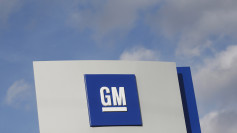The United Auto Workers (UAW) union has reached a significant milestone in its ongoing labor negotiations. On Saturday, the union announced a tentative agreement with Stellantis, the automaker behind brands such as Dodge, Ram, Chrysler, and Jeep. This development comes after approximately six weeks of targeted labor strikes across the U.S.
The tentative agreement, which mirrors a similar deal reached with Ford Motor earlier in the week, includes several notable provisions. One of the most significant is the revival of an Illinois assembly plant that Stellantis had shuttered in February, a move that initially left 1,200 workers unemployed. The plant is now set to produce a midsize truck, replacing the Jeep Cherokee compact SUV that was previously manufactured there.
UAW President Shawn Fain, in a statement, emphasized the union's achievements, stating, "Once again, we've achieved just weeks ago what we were told was impossible." He further highlighted the union's success in reopening the Belvidere Assembly Plant in Illinois, noting the return of jobs and the addition of more positions due to the introduction of a new battery plant in the same location.
However, while the UAW has made progress with Stellantis, its negotiations with General Motors (GM) have taken a different turn. The union expanded its strike against GM, America's largest automaker, dampening hopes of a swift resolution. This expansion saw nearly 4,000 GM factory workers in Spring Hill, Tennessee, joining the strike. GM expressed disappointment at the UAW's decision, emphasizing their commitment to reaching a fair agreement promptly.
The tentative agreement with Stellantis is expected to bring an end to six weeks of targeted labor strikes, which began after the parties failed to reach new deals for 146,000 UAW members by a September 14 deadline. The union had previously called back over 16,000 striking Ford workers after reaching a tentative agreement with the automaker.
Details of the Stellantis agreement, while not fully disclosed, suggest that pay scales will align with the Ford deal. This would entail an immediate minimum raise of 11%, with total raises amounting to 25% over the four-and-a-half-year duration of the contract. Additionally, a cost-of-living adjustment (COLA) is expected, a benefit the union had relinquished during Chrysler's financial struggles, a predecessor of Stellantis.
The labor strikes have had a significant financial impact on the automakers. GM reported losses of $800 million due to the strike, while Ford estimated a $1.3 billion hit. The strikes' expansion and continuation could further escalate these costs.
The UAW's strategy in these negotiations has been notably different from previous years. Instead of negotiating with each automaker individually, the union initiated talks with all three major automakers simultaneously. This approach, combined with the targeted strikes, aimed to increase pressure on the companies to reach favorable agreements.
With tentative agreements now in place with both Ford and Stellantis, attention shifts to the ongoing negotiations with GM. The outcome of these talks will shape the future of labor relations in the U.S. automotive industry.





